360 Tours | September 1, 2020
Laughlin Lake Interactive 360 Tour
Learn about the restoration of Laughlin Lake in this interactive virtual tour
ViewFor most of the last century, Laughlin Lake wasn’t a lake at all! It was drained in the late 1800’s or early 1900’s, and was used as an agricultural field up until the 1970s. Around this time, a gravel pit was created at the eastern end of the field, obliterating part of the original eastern shoreline. In the 1990s, the construction of Vineyard Way further disturbed this area, removing all vegetation along the roadside.
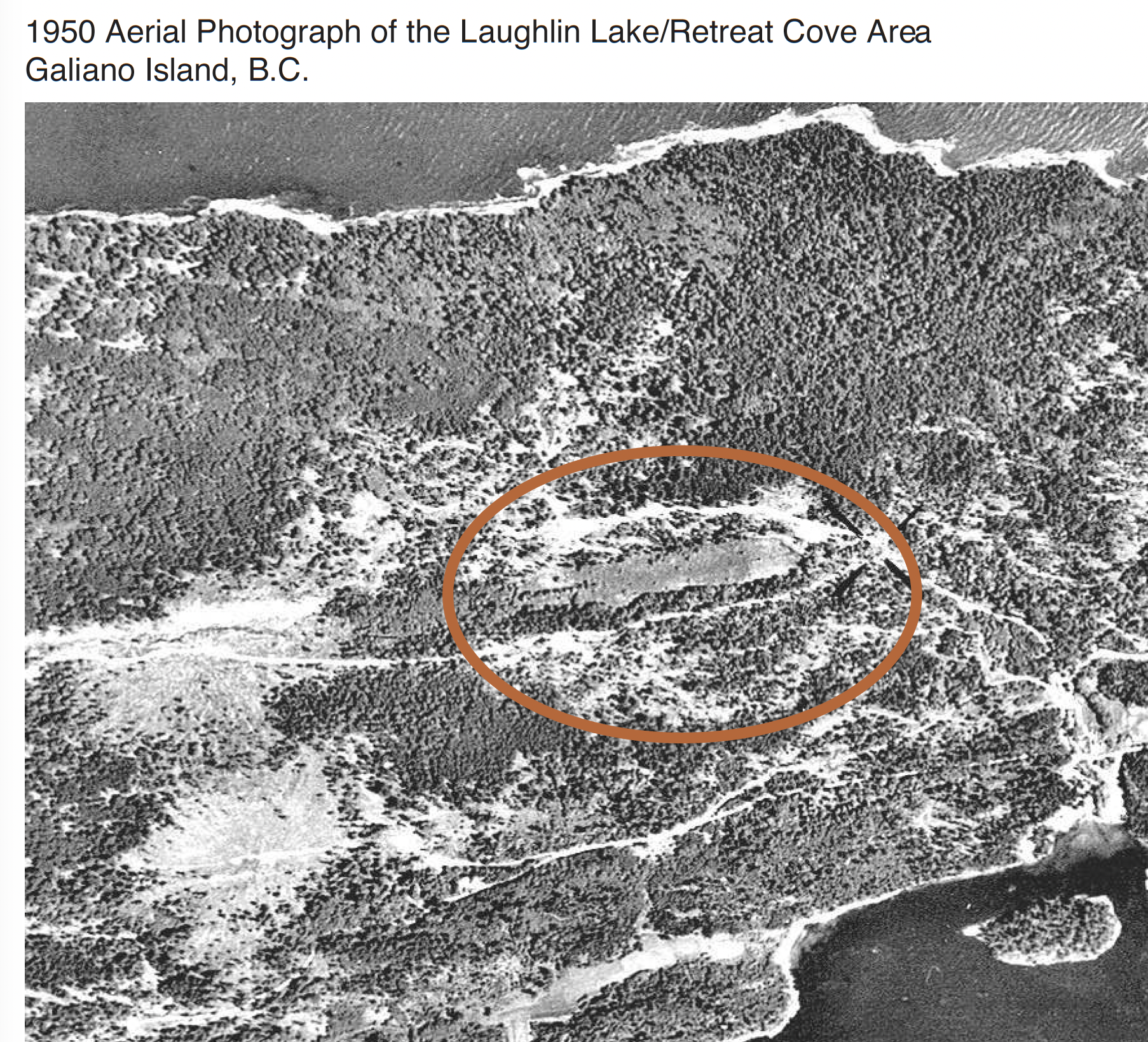
At some point in the 1970’s and early 1980’s, beavers (Castor canadensis) returned to the area and began to build dams. By the late 1980’s, the field was beginning to flood again. By the 1990’s, the entire field and the gravel pit were fully flooded, creating the coastline of Laughlin Lake that we are familiar with. Today, the lake is maintained by a series of beaver dams located along its eastern shoreline.
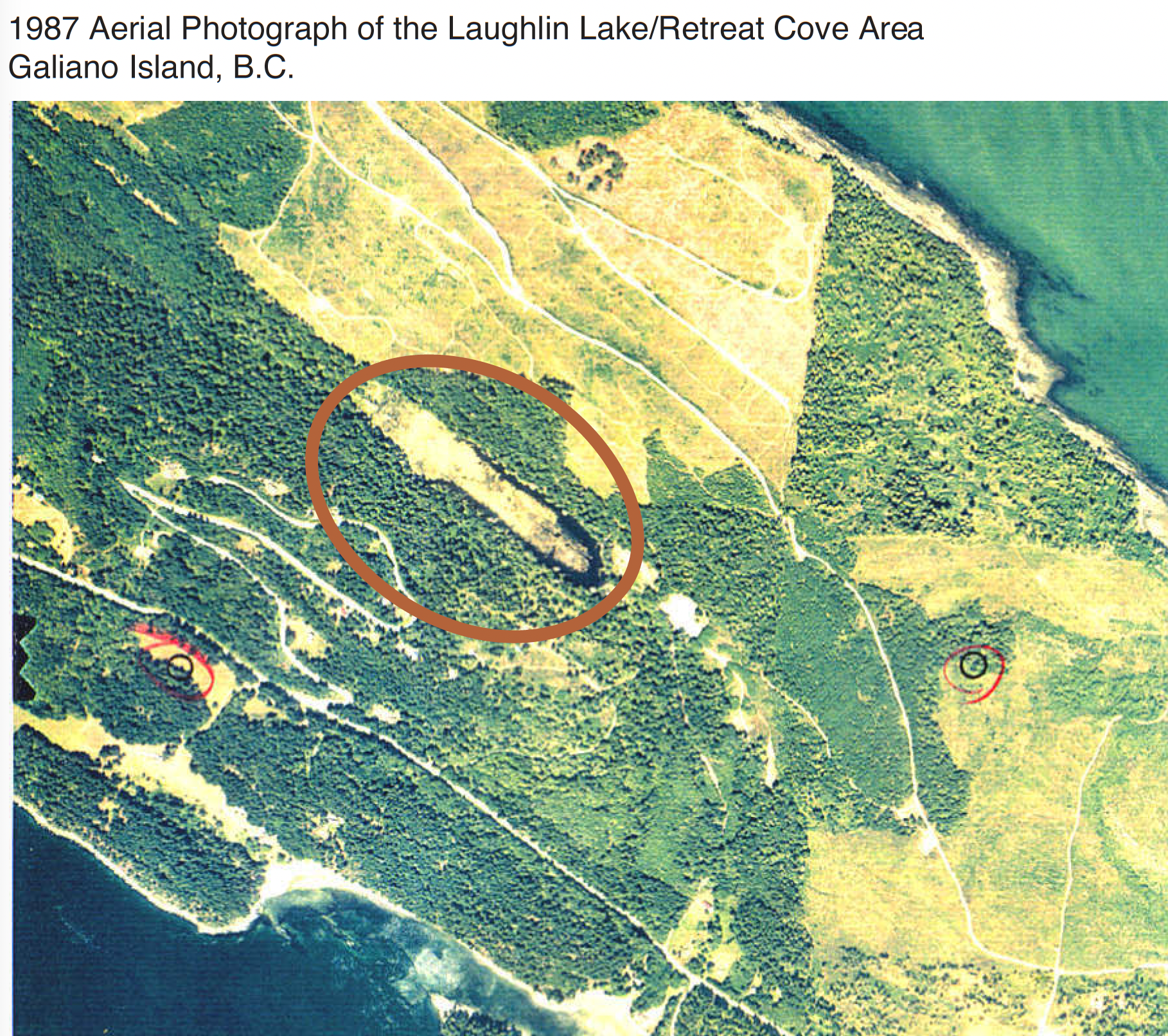
When the Galiano Conservancy purchased Laughlin Lake, the eastern shoreline had been completely deforested, and was dominated by thick stands of Scotch broom (Cytisus scoparius). Vineyard Way had recently been constructed through this area, leaving behind large fragmented boulder material and sink holes due to extensive gravel extraction and blasting. The peninsula created by the gravel pit was highly compacted, having essentially acted as a driveway for heavy vehicles extracting gravel.
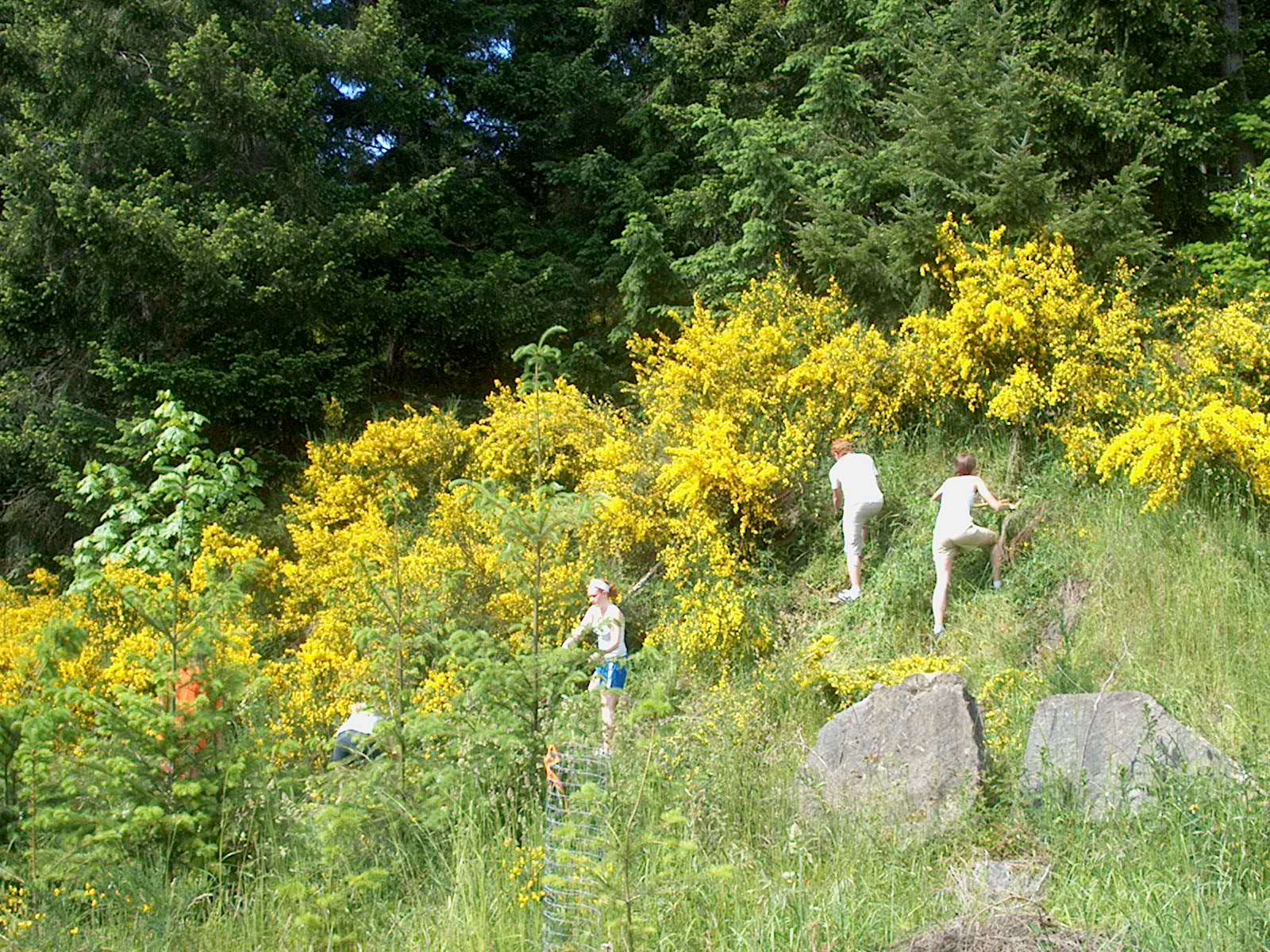
To allow the recovery of the eastern shoreline, massive amounts of Scotch broom needed to be removed. Galiano Conservancy staff, volunteers, and youth groups all participated in clearing the dense stands of mature broom. Native trees and shrubs were established with the hope that they would eventually form a canopy to shade out the other introduced species that had become established in this area.
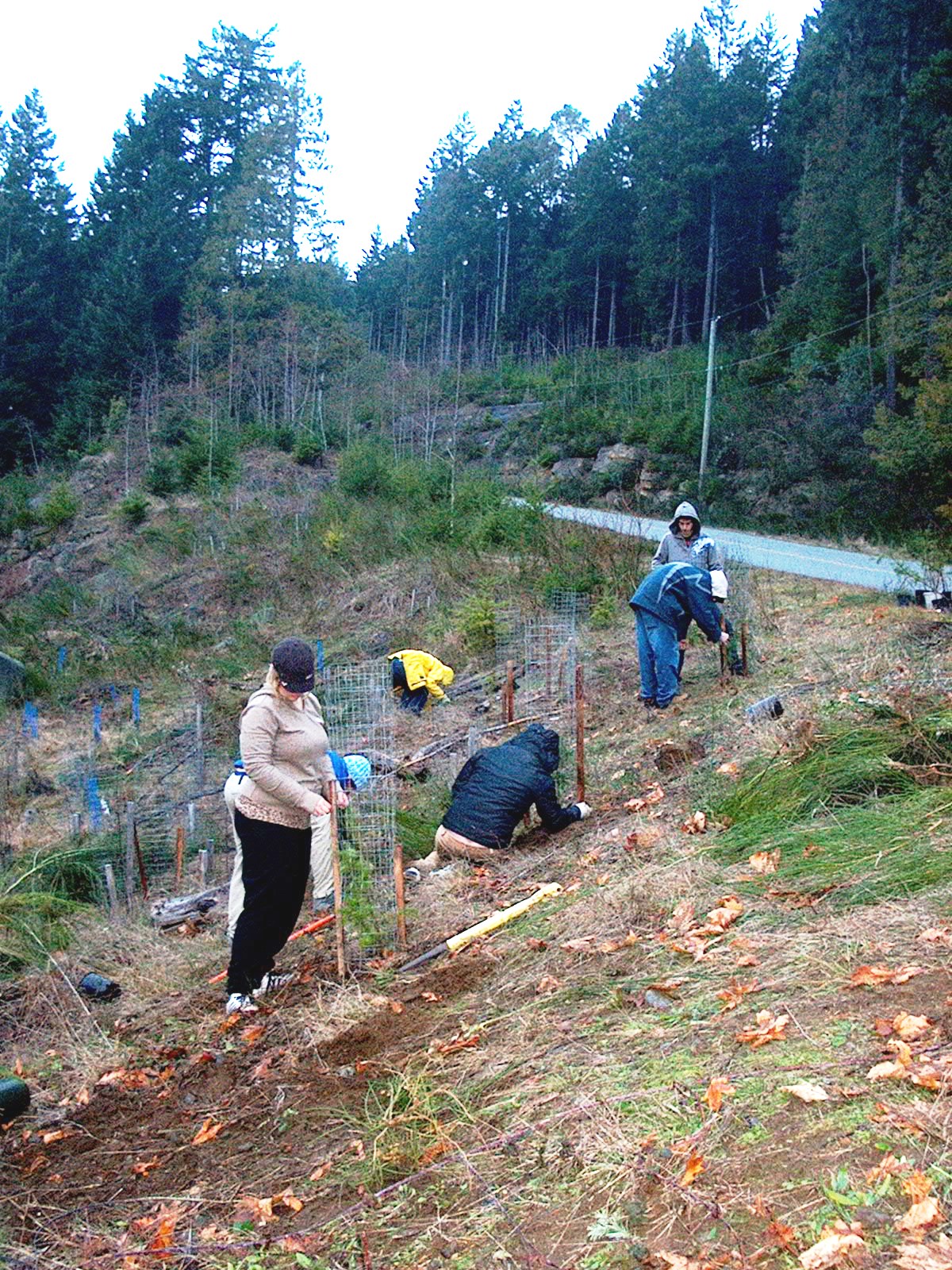
The peninsula had been used as a landing to support gravel extraction, resulting in a flat, compacted surface with little plant growth. Restoration treatments included bringing in an excavator to manually de-compact the soil, leaving it in a “rough and loose” condition; importing and distributing large coarse woody debris; and planting native tree and shrub species.
A bridge was constructed to allow the public to access new trail through the restored area on the peninsula. A stand pipe was also installed, allowing fire trucks to access water from Laughlin Lake in case of an emergency.
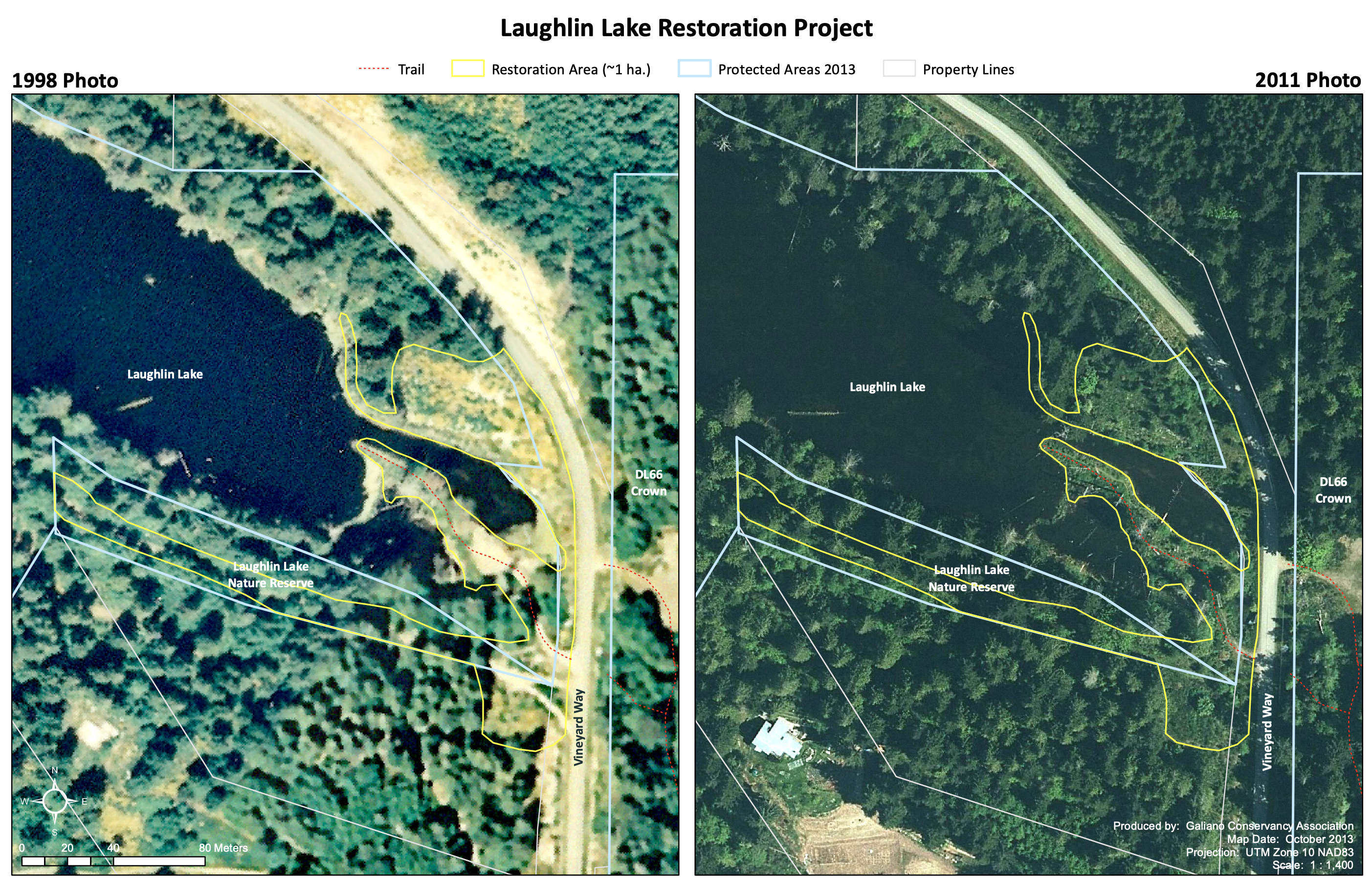
Laughlin Lake is the headwaters of Greig Creek, one of the only creeks on Galiano Island known to be capable of supporting anadromous fish such as salmon. Since Laughiln Lake was an agricultural field for much of the 20th century, previous fish populations were lost. Every year, the Galiano Conservancy and students from our local elementary school release chum salmon (Oncorhynchus keta) fry as part of Oceans Canada’s “Salmonids in the Classroom” program. Thus far, these efforts have been unsuccessful in re-establishing a viable salmon run in this small creek, but we remain hopeful that over time a few will return to lay eggs in Greig Creek at the end of their life. Even those that don’t return will become an important part of the food chain, feeding other fish, marine mammals, eagles, and more.
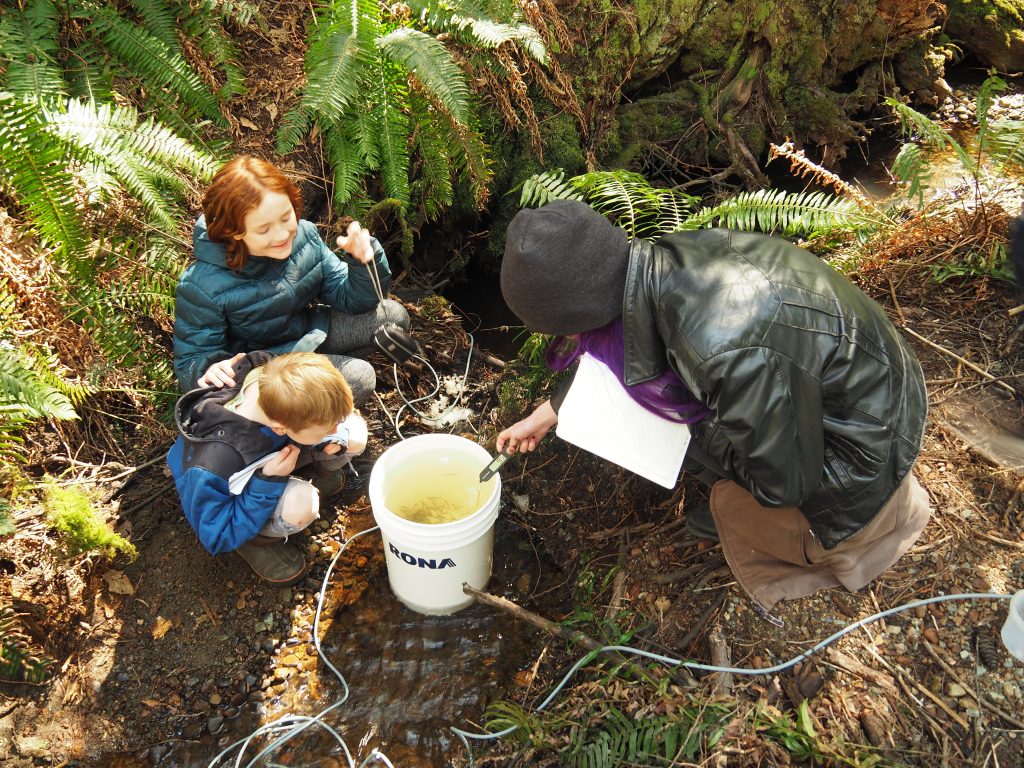
In the more than two decades since the first restoration treatments, a young, native forest ecosystem has developed in the restored area. To ensure the ongoing success of the recovery process, Galiano Conservancy staff continue to remove Scotch broom and other introduced species – including yellow flag iris (Iris pseudacorus) and Himalayan blackberry (Rubus armeniacus) – on an annual basis. We have had to use stucco wire to protect young trees from being harvested by beaver in specific areas. By carefully monitoring and maintaining the restored areas over more than 20 years, we’ve been able to keep Laughlin Lake on track to a full recovery.
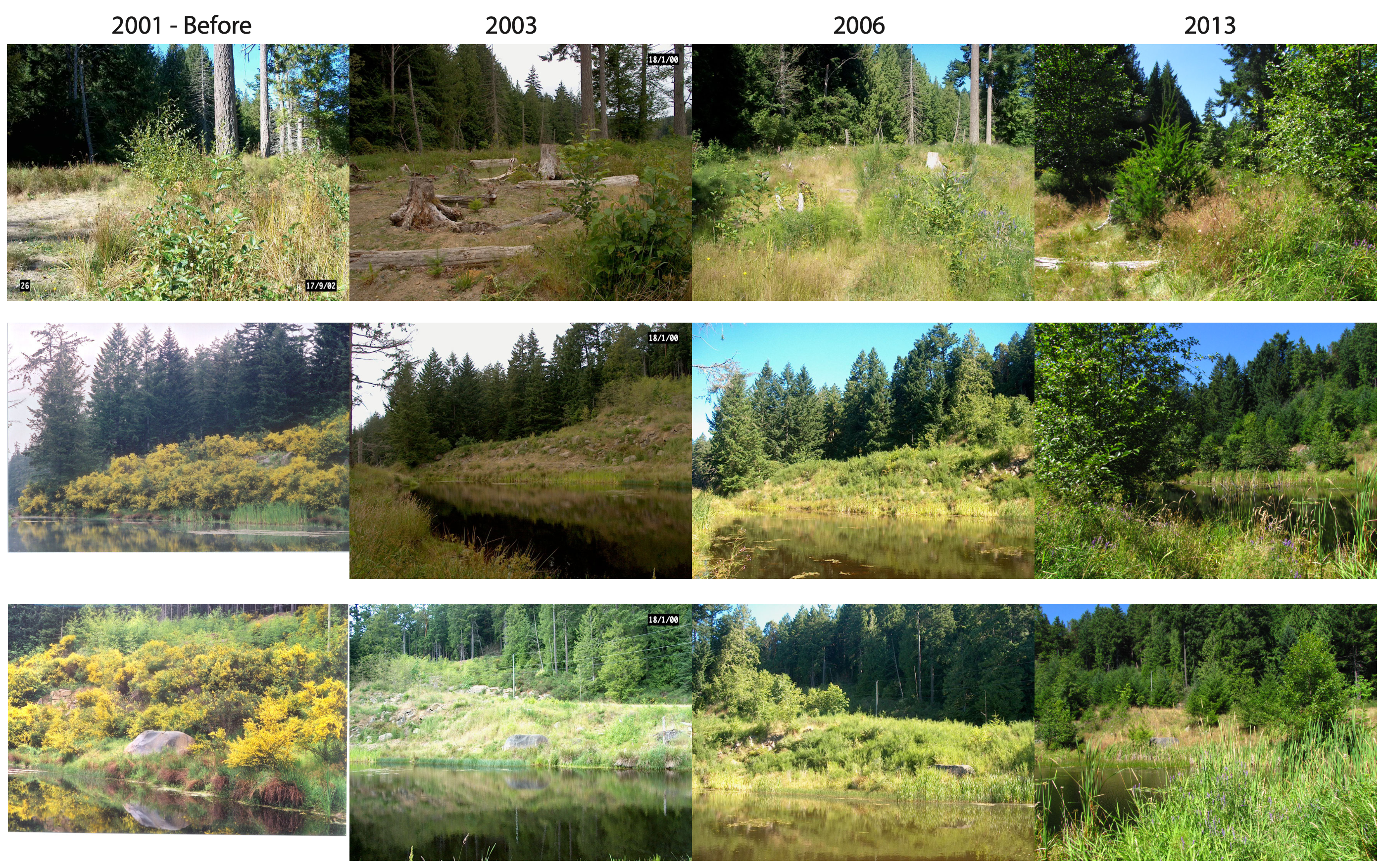
Laughlin Lake is a wonderful location to view wildlife, birdwatch, and observe a healthy wetland ecosystem. It supports a variety of Species at Risk (SAR), including the northern red-legged frog (Rana aurora), blue dasher (Pachydiplax longipennis), western pondhawk (Erythemis collocata), and great blue heron (Ardea herodias fannini).
You can visit by parking at the Vineyard Way trailhead and walking along a short (< 0.25 km) trail to the end of the restored peninsula.

Explore the following resources to learn more about the restoration in Laughlin Lake.
Learn about the restoration of Laughlin Lake in this interactive virtual tour
ViewReports from UVic’s ES 471 Class of 2017.
ViewCurrent management plan for Laughlin Lake
View